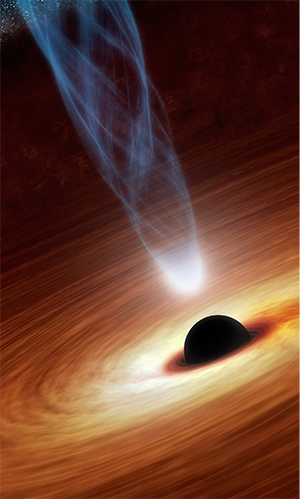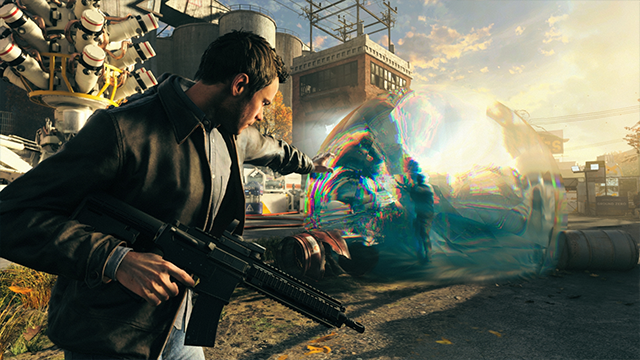Can a person idolize both Carl Sagan and Shigeru Miyamoto? Can someone enjoy watching Neil DeGrasse Tyson and TotalBiscuit? Is it possible for the same person to be interested in reading the Foundation series and Ready Player One?
I believe the answer is yes, and I am one of those people. And if your YouTube subscriptions include Hank Green, Smosh Games, Phil Plait, Extra Credits, and Veritasium, then just like me, you’re going to love Sciencing the Shit Out of Video Games.
Instead of telling you what this series of articles is about, how about we just dive in?
Tuesday, Quantum Break released. We have been wowed by its time-stopping mechanics and its thought provoking storyline. In an interview with Nerdist, star of the third-person shooter Shawn Ashmore said that the developers had actual astrophysicists on staff to help keep the story in line with actual science. Many people would balk at a statement like that. We’re talking about time-travel, right? That’s the stuff of science fiction; there is no way for us to travel through time, right?
Well, it’s not science fiction. In fact, it’s possible that even the Time Stop bubbles from the game have their place in science. But before we get into that, we have to take a look at how space and time work because they don’t necessarily work the way you think.

Yesterday, I watched a great episode of Agents of SHIELD, and it illustrated space and time in a very interesting way. Time is often considered the fourth dimension. Although that’s probably not the most accurate way to describe what time is in General Relativity, it will work for this illustration.
Imagine for an instant that we are no longer three-dimensional beings. We no longer perceive depth. We’re flat, like a piece of paper. Now imagine that we are a part of a stack of paper on a table with each piece of paper representing one moment in time. If someone were to draw a diagonal line on the outside of the stack of paper, the person drawing the line would see it as a single line, but we, being two-dimensional beings, would see a dot moving in time.
Got it? Because we are going to get deeper.
We all know that all matter has mass and that mass has gravity. We also know that objects with higher mass attract objects of lower mass. That’s gravitational basics, right? But did you also know that time actually slows down the closer you get to a higher mass object? It’s true.
On Earth, we are talking about nominal differences. Your feet perceive time slightly slower than your head, but it’s so minute that you don’t even notice it. In fact, you’re likely not going to notice the time difference even if you were orbiting Earth in the same way that satellites do, but your GPS does. Did you know that your clock on Earth ticks about 38 microseconds a day slower than the clock on your GPS satellite? I know that doesn’t sound like a lot. But it certainly adds up, and it could throw everything off.
 By now you’re wondering what this has to do with Quantum Break, I’ll get to that in just a moment. There is one more concept I’d like touch on: black holes. But those are in space, right? They are, but I mention them because they represent the densest objects in the known universe.
By now you’re wondering what this has to do with Quantum Break, I’ll get to that in just a moment. There is one more concept I’d like touch on: black holes. But those are in space, right? They are, but I mention them because they represent the densest objects in the known universe.
The gravity and density of black holes are so great that even light cannot escape from them. Because they are so dense, it means that they have the greatest fluctuation in time from a safe orbit to the event horizon, which is the point where light can’t even escape the gravity. If we were to spin a top and push it toward a black hole, it would seem to slow down until it stopped spinning at the event horizon. But assuming there are no other forces acting on the spinning top, the toy would continue to spin at the same speed infinitely, if you happen to be traveling with it.
Quantum Break is really about mini black holes.
Before the Large Hadron Collider in Switzerland started its operations, many people believed that it would cause end-of-the-world scenarios. The novel Flashforward by Robert J. Sawyer touched on one of those possible scenarios. However, that book was pure fantasy compared to the belief that it would cause micro black holes. And these quantum mechanical objects are exactly what they sound like, but the problem is that they only exist in mathematical theory; no one has ever observed them.
If someone were to actually create a micro black hole with the mass of the average man, we might actually see a time shift like the ones we see in Quantum Break. In fact, if we go back to the interview with Ashmore, that is exactly how it was explained to the actor playing the main character Jack Joyce.

If the black hole was the same mass as the average man, it would be extremely small. Would it even be big enough to see? Well, thankfully, we have a calculation to figure it out — it’s called the Schwarzschild radius, which is written:
R=2GM/c2
This is the radius of a sphere, where if all the mass were compressed into one area, the escape velocity would be the same as the speed of light.
Thankfully, we have all the numbers we need to punch into that formula. G is the gravitational constant (6.674×10-11 N⋅m2/kg2). M is the mass of the black hole; in this case we will use 80 kg because it’s the average mass of a human male. And c is the speed of light. When you plug in all those numbers, you end up with an astronomically small number. Ready for it? ~1.18813224×10-25 m.
Yeah, that’s invisible to even the most powerful microscope. In fact, that’s smaller than a proton, but does that make it impossible to exist? Surprisingly, no. The smallest unit of measurement is the Planck. Anything smaller disappears into the quantum fog, and the Planck mass for a black hole is about 22 micrograms, which is far smaller than the 80 kg. In fact, it’s about the mass of a flea’s egg.

But everything starts to fall apart when we talk about how to control these mini black holes.
The funny part isn’t that everything would actually be sucked into the black hole because the chances are that wouldn’t happen. There is just no way to control them or make them not dissipate instantly.
The fiction side of the game gets away with this by introducing the Meyers-Joyce particle. These made-up particles control the gravitational pull of matter, and Jack’s brother William discovered them. But it still falls apart when you think about Jack and others being able to move freely around the Time Stop bubbles when time has been slowed.
The scientific verdict is that although these mini pockets of time differentiations could exist, we just have no way to control them or even contain the mini black holes that would make them.
What do you think of my verdict? Did I get it right or wrong? The whole point of science is to test and retest. Let me know your thoughts in the comments. Also, if you’re looking for more on time and space, PBS releases a series of amazingly in-depth videos called SpaceTime. You should check that out.
Next week, I’m going to science the shit out of The Division’s Chimera pandemic, but ultimately, I want to discuss the subjects you want to read about. Is there anything in video games that need to be proven right or wrong? Let’s science the shit out of them.







Published: Apr 7, 2016 08:13 am